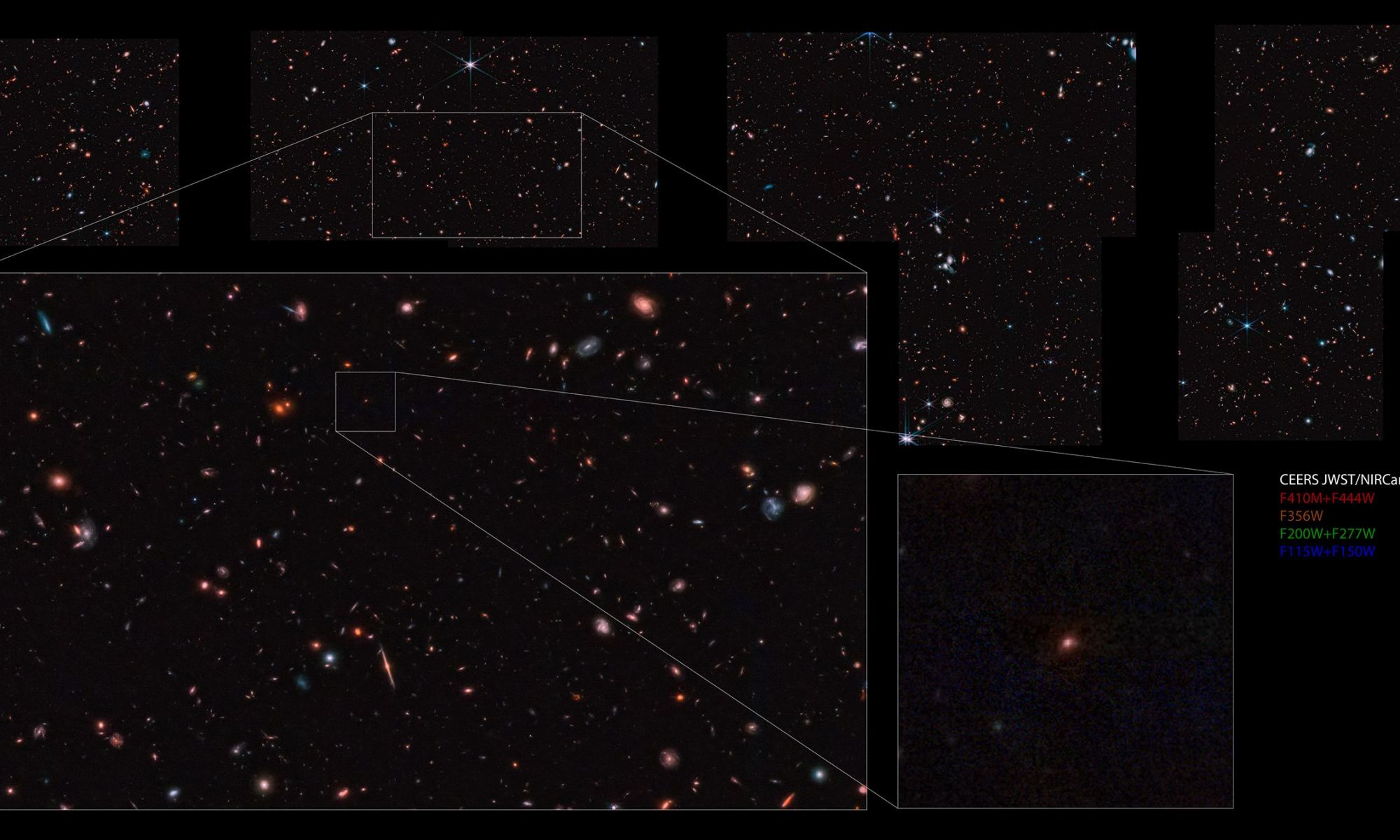One of the main objectives of the James Webb Space Telescope (JWST) is to use its powerful optics and advanced instruments to observe the earliest galaxies in the Universe. These galaxies formed about 1 billion years after the Big Bang, coinciding with the end of what is known as the “Cosmic Dark Ages.” This epoch is inaccessible for conventional optical telescopes because the only sources of photons were largely associated with the relic radiation of the Big Bang – visible today as the Cosmic Microwave Background (CMB) – or were the result of the reionization of neutral hydrogen (visible today the 21 cm line).
Thanks to its advanced optics and infrared imaging capabilities, Webb has pushed the boundaries of how far astronomers and cosmologists can see. One of the most interesting finds was Maisie’s galaxy, which appeared to have existed roughly 390 million years after the Big Bang. According to a new study by the Cosmic Evolution Early Release Science Survey (CEERS) that recently appeared in Nature, these results have since been confirmed. This makes Maisie’s galaxy one of the farthest (and earliest) confirmed galaxies ever observed by human eyes.
Continue reading “You’re Looking at One of the Farthest Confirmed Galaxies Found by JWST”
